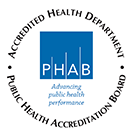
This month is National Snacking Month and while we’re all about eating some cookies and potato chips, we know that a healthy snack is better for our body. So, while we can indulge occasionally in tasty, not-so-healthy snacks, we can also enjoy and savor some healthy snacks.
How to practice healthy snacking:
Developing a routine for healthy snacking can help you manage your weight, health, hunger cravings, and give you energy to get through the day. Many times, we just reach for the closest and easiest item to snack on when we think we’re hungry. But doing a bit of planning might just help you make “better for you” choices. This way, you’ll get some needed nutrients and satisfy your hunger.
Choose wisely
Knowing what foods have the needed nutrients for your body will help you stay full and satisfied. Try focusing on these:
- Fruits and vegetables
- Whole grain foods (See our blog here for ideas)
- Plant-based proteins (like beans, broccoli, and nut butters)
Stay away from:
- Sugary drinks
- Candy
- Potato chips and pretzels
- Ice cream
- French fries
- Muffins, cakes, and cookies
Think before eating that snack
Do you always snack while watching TV, working from home, or doing other mindless tasks? Taking a moment to think about when you snack and why can help you identify opportunities for healthier snacking. Here are some tips:
- Eat your snack slowly.
- Don’t be distracted by something else when snacking.
- Give yourself a small portion of the snack. Keep a small bowl or plate at the ready for your snack, so you won’t be tempted to eat more.
- Eat snacks when you’re really hungry, not because it’s snack time or you’re bored or tired.
Do a bit of planning
A bit of planning will help you eat healthier. The key is to have your healthy options ready to go!
- Chop vegetables and keep them in the refrigerator or buy bags of precut vegetables.
- Wash the fruit you want to eat that day and have it ready in the refrigerator. Keep fruit in a bowl on the counter for the day.
Here is a list of healthy snacks to get you started:
- Whole grain toast with nut butter or natural peanut butter (no sugar) and a cut up banana
- A few whole grain crackers with hummus, low-fat cottage cheese or a few small pieces of cheese
- Plain popcorn
- Nuts (a small handful)
- Lower sugar Greek yogurt with cut up fruit
- Apple slices with natural peanut butter
- Cottage cheese with fruit or peanut butter
- Celery sticks with a bit of cream cheese, peanut butter, or hummus
- Hard-boiled egg
- Protein smoothie (an easy way to hide fruits and veggies)
- Oatmeal
- Make your own trail mix with nuts, some dried fruit, and unsweetened cereal
- Pita pocket with carrots, celery, bell peppers and lettuce
- Half a sandwich made with 100% whole wheat bread, a protein and a fruit or veggie. Think-turkey, cheese and pickles or lettuce, peanut butter and banana or apple slices, or tomato and a sliced hard-boiled egg
Even replacing one snack a day with a healthier version is a good start. Limit portion sizes, stop and think before you eat a less healthy snack, and drink water. Many times, we aren’t even hungry, just thirsty!
Do you need some help planning meals and creating healthy snacks? Reach out to Lillian, our Patient Care Navigator and Registered Dietician for some help and ideas. More about Lillian’s services can be found HERE.



